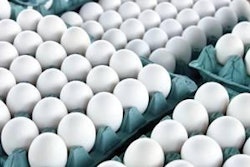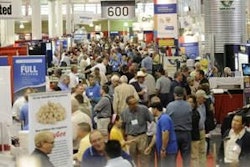According to data from the Brazilian Feed Industry Association, Sindirações, overall animal feed production in Brazil grew about 4.7 percent in 2011. Fish feed increased the most, at 24.6 percent, followed by beef cattle feed and dairy feed at 8 percent and 8.1 percent, respectively.
Dr. Ariovaldo Zani, Sindirações CEO, said that the industry produced nearly 64 million metric tons of complete feed in 2011 In addition, it produced 2.35 million metric tons of supplements, and approximately $20 billion in supplies – mainly corn, soybean meal and additives.
Broiler feed
Brazil’s broiler industry represented 50 percent of the overall feed demand in 2011 due to an increase of 6.4 percent and consumption of more than 32 million metric tons.
“The continuous overvalued exchange rate until last September, the reflections of the fiscal crisis within the European Union, the geopolitical strikes in the Middle East, and embargoes from Russia and South Africa hurt Brazilian chicken exports, which increased only 3 percent compared to the same period in 2010,” Zani said.
Despite the poultry surplus in the domestic market during the last quarter of 2010 and first quarter of 2011, he noted that profitability was preserved because the feed price was offset by better prices paid to producers.
Layer feed
The production of feed for laying hens reached 4.9 million metric tons in 2011 in response to housing of just 79 million laying chicks.
Zani explained: “The external factors as well as the valuated currency adversely affected the export performance of eggs, which fell more than 50 percent through the cumulative period of one year until October. Although the average egg price from January through September grew 20 percent over the same period in 2010, the high cost of corn and other raw materials hurt producer profitability.”
Beef cattle feed
Beef cattle feed came in at 2.7 million metric tons with an increase of almost 8 percent, while the growth of feedlots increased 10 percent.
“The intensity of the cold weather, dry grass and high feed cost decreased the availability of pastures and cattle troughs. Moreover, the scarce supply of calves, the outbreak of Food and Mouth Disease in Paraguay, and the dollar valuation contributed to keep the beef price above $65 in Brazil,” Zani said.
More than $5 billion resulted from exports of 1 million metric tons of beef in 2011.
Dairy feed
There was an 8 percent growth and production of 5 million metric tons of feed for dairy despite the high cost of feedstuffs used in food. According to Zani, the production constraints were in response to the low quality of pastures due to drought and also due to a fall in the uptake of milk, which strengthened the price paid to producers. However, the high cost of corn, soybean meal and additives continued to limit the recovery of the dairy sector, which produced roughly 31 billion liters of milk.
Swine feed
The amount of pig meat in 2011 decreased by 5 percent due to the overvalued exchange rate in the first half of the year as well as by trade embargoes.
“The increase in production cost was determined mainly by the significant valuation of corn and soybean meal, which drove a faster slaughter pace of breeders and particularly lighter finished pigs. These combined factors pushed the price of live pigs paid to producers and maintained herd stability,” explained Zani.
The feed industry produced about 15.4 million metric tons of swine feed in 2011.
Dog and cat food
The production of dog and cat food grew about 4 percent in 2011, reaching about 2.1 million metric tons. The retail revenue was $6 billion with products and services for dogs, cats, exotic birds and ornamental fish showing an increase of 4.5 percent compared to 2010.
Fish and shrimp feed
The demand for fish feed reached 430,000 metric tons in 2011, reflecting an extraordinary 25 percent growth.
However, shrimp production in Brazil was less productive. Sanitary challenges, trade embargoes, global price reduction and environmental-licensing authorization bureaucracy all had a negative impact. “In addition, industry was unable to properly invest in technology and production systems to make them more productive and sustaining,” explained Zani. Overall, consumption of shrimp feed remained stable in 2011.
Considerations and forecasts for 2012
“In October 2011, the world population reached 7 billion people, and according to FAO demographic trials, it may move above 9 billion by the middle of the century,” Zani said. “This increase in humankind will occur mainly in Asia and Africa, which will be responsible for 2.25 billion new inhabitants, while the Americas, Europe and Oceania will contribute only 250 million.”
Although there are considerable challenges ahead in adequately feeding the globe, Zani feels that better usage of available land, better planting techniques and use of technology will enable Brazil to help meet the challenge.
“If there is a global financial crisis, it may be offset in part in Brazil because of Brazil’s discipline in macroeconomic management, which is underpinned by a solid and reliable financial system, a modern and independent central bank policy, a floating exchange rate, a primary surplus recorded by the public sector, and an accumulation of more than $350 billion in reserves,” he said.

















